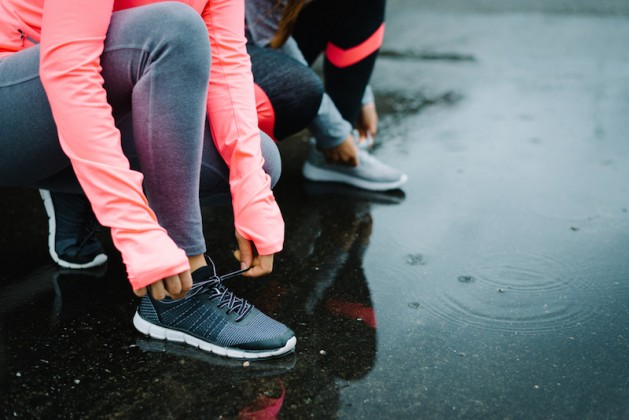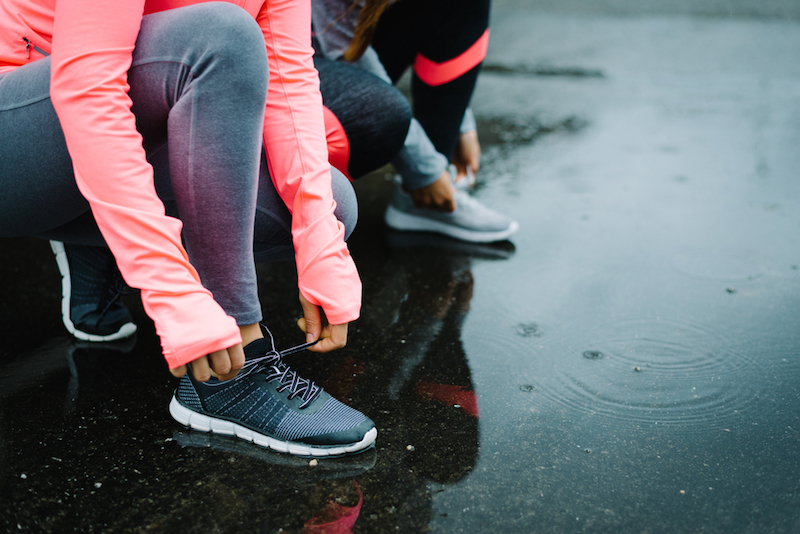
For new and seasoned runners alike, avoiding running injuries is the most important step in any exercise routine. Running is tough on the body. Joints, ligaments, and muscles all work together to create the perfect gait. But when something’s off, there’s no telling how it will affect your body.
Common running injuries include shin splints, knee pain, iliotibial band syndrome, achilles tendinitis, and plantar fasciitis. Many of these running injuries can be prevented with basic techniques, such as purchasing the correct running shoes or working on your gait. With so much research out today, including the modern classic Born To Run by Christopher McDougall, there are plenty of ideas to help find the right balance for your body. But if you have known specific weak spots, use these techniques to avoid the common running injuries.
Knee Pain
Knee pain, sometimes referred to as Runner’s Knee, is the irritation of cartilage near the kneecap. It can also be caused when the tendons of the knee are overworked and strained. Because Runner’s Knee is linked to weak hip rotator muscles, you can avoid the injury by performing a few pilates-type moves. Lay on your side with both legs out straight and simply lift the top leg up and down without it touching your bottom foot. Try the same move, but with knees bent, keeping the heels together and lifting the knee.
Plantar Fasciitis
The dreaded pain of plantar fasciitis happens when the ligament that links your heel to your forefoot (and supports the arch) is inflamed. The root of plantar fasciitis is tied to arch support, so consider strengthening the muscles by using minimalist shoes, walking barefoot for a couple hours each day, or purchasing orthotics with arch support.
Shin Splints
Almost everyone has had shin splints at some point in their lives. The sharp and irritating pain felt on the shin happens when the underlying muscles and tendons are overworked and inflamed. This injury is more common for new runners, so be sure to increase your distances slowly to avoid it. If you feel shin splint pain, simply ice the area and take time off of running for the inflammation to go down.
Iliotibial Band Syndrome
The iliotibial (IT) band tendon runs from hip to knee, so runners often feel pain when it gets tight. While you can’t avoid overworking the IT band, you can certainly prevent irritation by using a foam roller after each run. Use the foam roller to work through the outer hip and knee, which helps break up tension and knots before they become long term problems.
Achilles Tendinitis
Tight calf muscles are to blame for achilles tendinitis, the ever-present threat to runners. To avoid pain in the large tendon that links your heel to your calves, simply strengthen your calf muscles by performing an easy exercise a few times per week. Calf raises, where you lift by rolling straight up onto the balls of your feet, are easy and quick. You can even do them at your desk!



